Lehman’s Bankruptcy Expenses

In bankruptcy, firms incur expenses for services provided by lawyers, accountants, and other professionals. Such expenses can be quite high, especially for complex resolutions. The direct costs of bankruptcy proceedings reduce a firm’s value below its fundamental level, thus constituting a “deadweight loss.” Bankruptcy also carries indirect costs, such as the loss in value of assets trapped in bankruptcy—a subject discussed in our previous post (link). In this post, we provide the first comprehensive estimates of the direct costs of resolving Lehman Brothers’ holding company (LBHI) and its affiliates under Chapter 11 bankruptcy, and of Lehman’s broker-dealer (LBI) under the Securities Investor Protection Act (SIPA).
Creditor Recovery in Lehman’s Bankruptcy

Expectations of creditor recovery were low when the Lehman Brothers bankruptcy process started. On the day the firm filed for bankruptcy in September 2008, the average price of Lehman’s senior bonds implied a recovery rate of about 30 percent for senior creditors. A month later the bond price was implying a recovery rate of 9 percent, consistent with results from Lehman’s CDS auction. Two and a half years later, Lehman’s estate estimated that the recovery rate for holding company creditors would be just 16 percent. So, ten years after the filing, how much did creditors actually recover?
How Much Value Was Destroyed by the Lehman Bankruptcy?

Lehman Brothers Holdings Inc. (LBHI) filed for Chapter 11 bankruptcy protection on September 15, 2008, initiating one of the largest and most complex bankruptcy proceedings in history. Recovery prospects for creditors, who submitted about $1.2 trillion of claims against the Lehman estate, were quite bleak. This week, we will publish a series of four posts that provide an assessment of the value lost to Lehman, its creditors, and other stakeholders now that the bankruptcy proceedings are winding down. Where appropriate, we also consider the liquidation of Lehman’s investment banking affiliate (which occurred on a separate track in the Securities Investor Protection Act (SIPA) proceedings).
Coming to Terms with Operational Risk

The term “operational risk” often evokes images of catastrophic events like hurricanes and earthquakes. For financial institutions, however, operational risk has a broader scope, encompassing losses related to fraud, rogue trading, product misrepresentation, computer and system failures, and cyberattacks, among other things. In this blog post, we discuss how operational risk has come into greater focus over the past two decades—to the point that it now accounts for more than a quarter of financial institutions’ regulatory capital.
Cryptocurrencies, Tariffs, “Too Big to Fail,” and Other Top LSE Posts of 2018
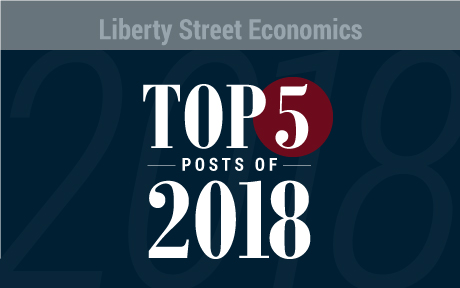
“Cryptocurrency” hit the cultural mainstream in 2018. In March, Merriam-Webster added “cryptocurrency” to the dictionary, and in what was perhaps a greater litmus test of pop culture recognition, “bitcoin” was added to the official Scrabble dictionary in September. With such a surge in interest, it’s not too surprising that the most viewed post on Liberty Street Economics this past year focused on an issue surrounding how digital currencies operate that is not often put in the spotlight—trust. Similarly, as the subject of tariffs has become a more frequent topic of discussion in the news, readers have sought additional info, which fueled interest in another of our most viewed posts of the year. As 2019 approaches, we offer a chance to revisit these posts and the rest of our top five of 2018.
Liquidity Effects of Post‑Crisis Regulatory Reform
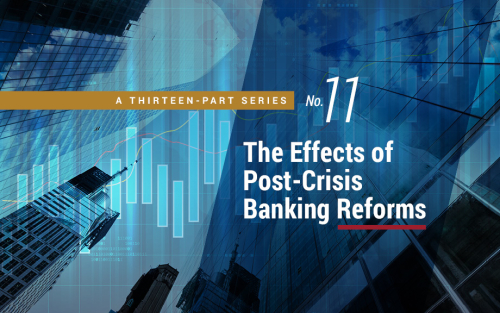
The post-crisis regulatory reform efforts to improve capital and liquidity positions of regulated institutions provide incentives for banks to change not only the structure of their own balance sheets but also how they interact with their customers and other market participants more generally. A 2015 PwC study on global financial market liquidity, for example, noted that “[a]s banks respond to the new regulatory environment, they have sought to make more efficient use of capital and liquidity resources, by reducing the markets they serve and streamlining their operations.” In this blog post, we provide an overview of three recent New York Fed staff reports that study the impact that post-crisis regulation has had on the willingness and ability of regulated firms to participate in U.S. over-the-counter (OTC) markets.
Analyzing the Effects of CFPB Oversight
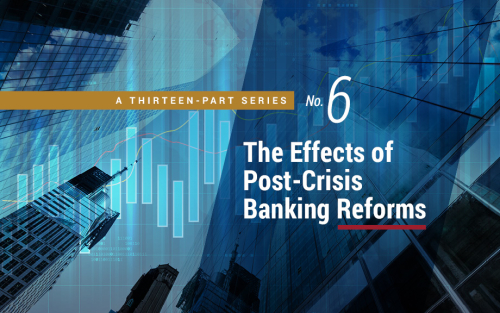
The Consumer Financial Protection Bureau (CFPB), created in 2011, is a key element of post-crisis U.S. financial regulation, as well as the subject of intense debate. While some have praised the agency, citing the benefits of consumer financial protection, others argue that its activities involve high compliance costs, increase uncertainty and legal risk, and ultimately reduce the availability of financial services for consumers. We contribute to this debate by investigating empirically whether the CFPB’s supervisory and enforcement activities have significantly affected the supply of mortgage credit, or had other effects on bank risk-taking and profitability
Resolving “Too Big to Fail”
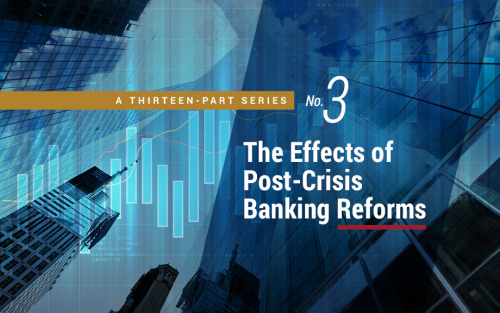
Many market participants believe that large financial institutions enjoy an implicit guarantee that the government will step in to rescue them from potential failure. These “Too Big to Fail” (TBTF) issues became particularly salient during the 2008 crisis. From the government’s perspective, rescuing these financial institutions can be important to avoid harm to the financial system. The bailouts also artificially lower the risk borne by investors and the financing costs of big banks. The Dodd-Frank Act attempts to remove the incentive for governments to bail out banks in the first place by mandating that each large bank file a “living will” that details its strategy for a rapid and orderly resolution in the event of material distress or failure without disrupting the broader economy. In our recent New York Fed staff report, we look at whether living wills are effective at reducing the cost of implicit TBTF bailout subsidies.
Regulatory Changes and the Cost of Capital for Banks
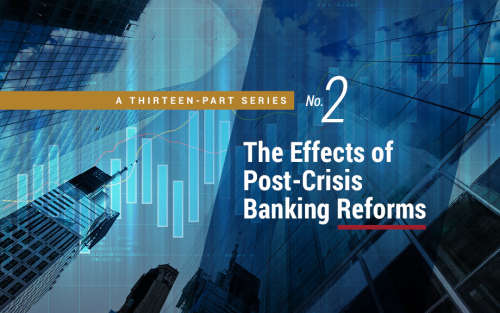
In response to the financial crisis nearly a decade ago, a number of regulations were passed to improve the safety and soundness of the financial system. In this post and our related staff report, we provide a new perspective on the effect of these regulations by estimating the cost of capital for banks over the past two decades. We find that, while banks’ cost of capital soared during the financial crisis, after the passage of the Dodd-Frank Act (DFA), banks experienced a greater decrease in their cost of capital than nonbanks and nonbank financial intermediaries (NBFI).
The Effects of Post‑Crisis Banking Reforms
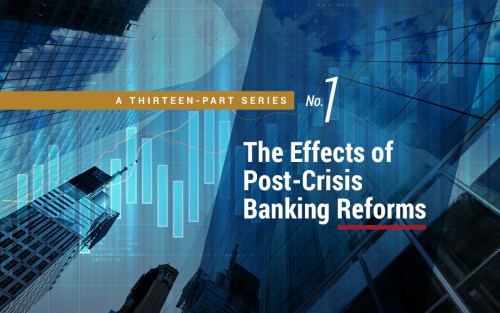
The financial crisis of 2007-08 exposed many limitations of the regulatory architecture of the U.S. financial system. In an attempt to mitigate these limitations, there has been a wave of regulatory reforms in the post-crisis period, especially in the banking sector. These include tighter bank capital and liquidity rules; new resolution procedures for failed banks; the creation of a stand-alone consumer protection agency; greater transparency in money market funds; and a move to central clearing of derivatives, among other measures. As these reforms have been finalized and implemented, a healthy debate has emerged in the policy and academic communities over the degree to which they have achieved their intended goals and the extent of any unintended consequences that might have arisen in the process.














 RSS Feed
RSS Feed Follow Liberty Street Economics
Follow Liberty Street Economics